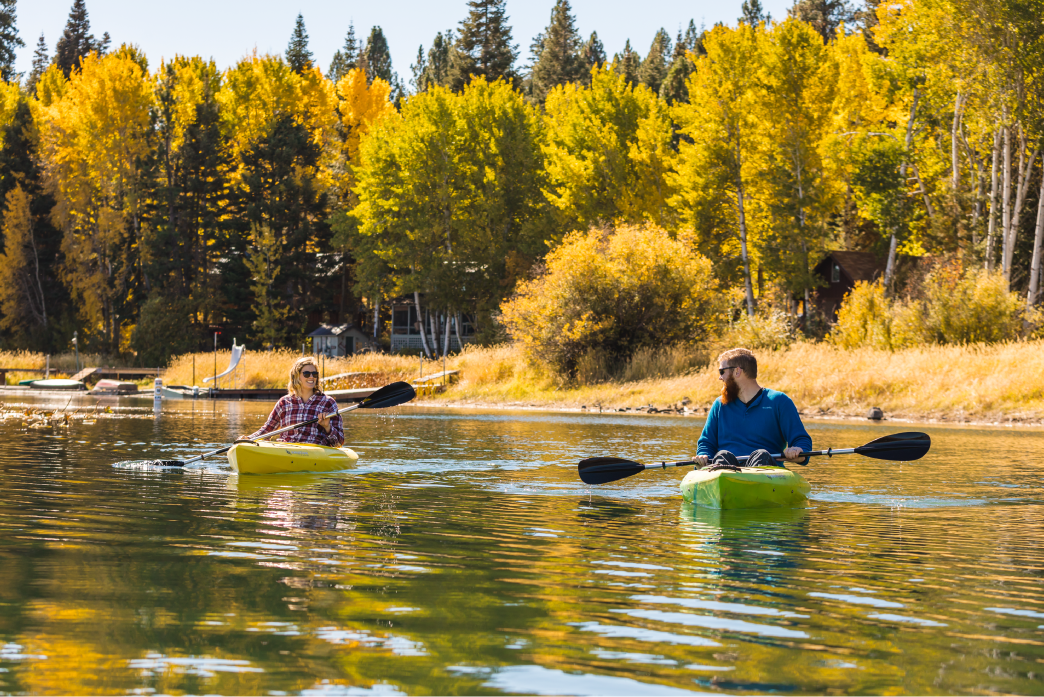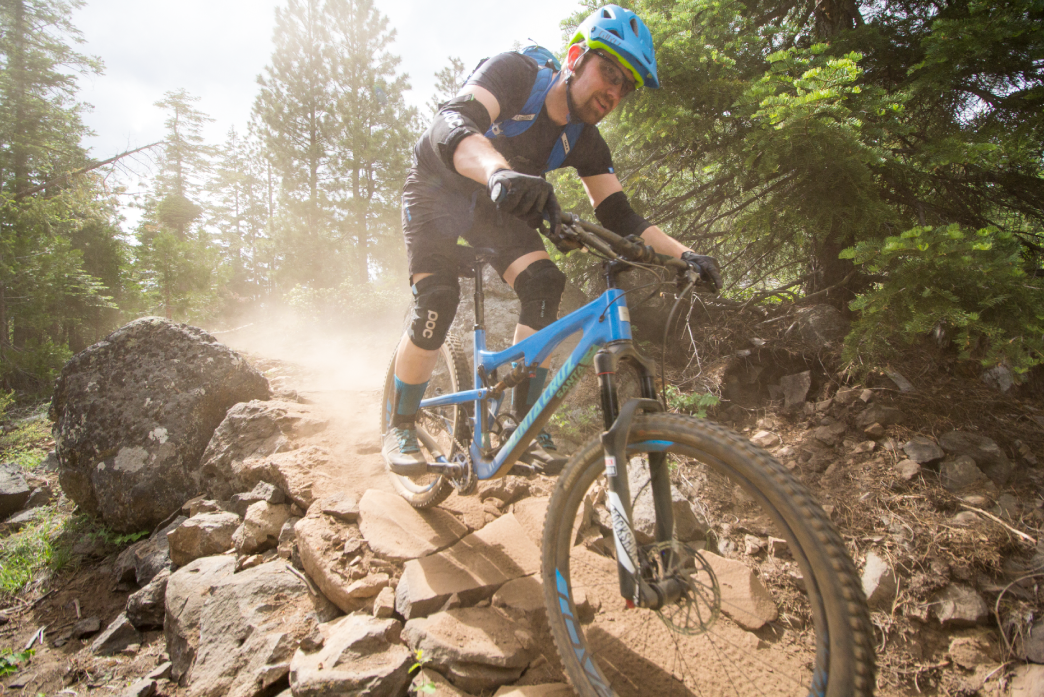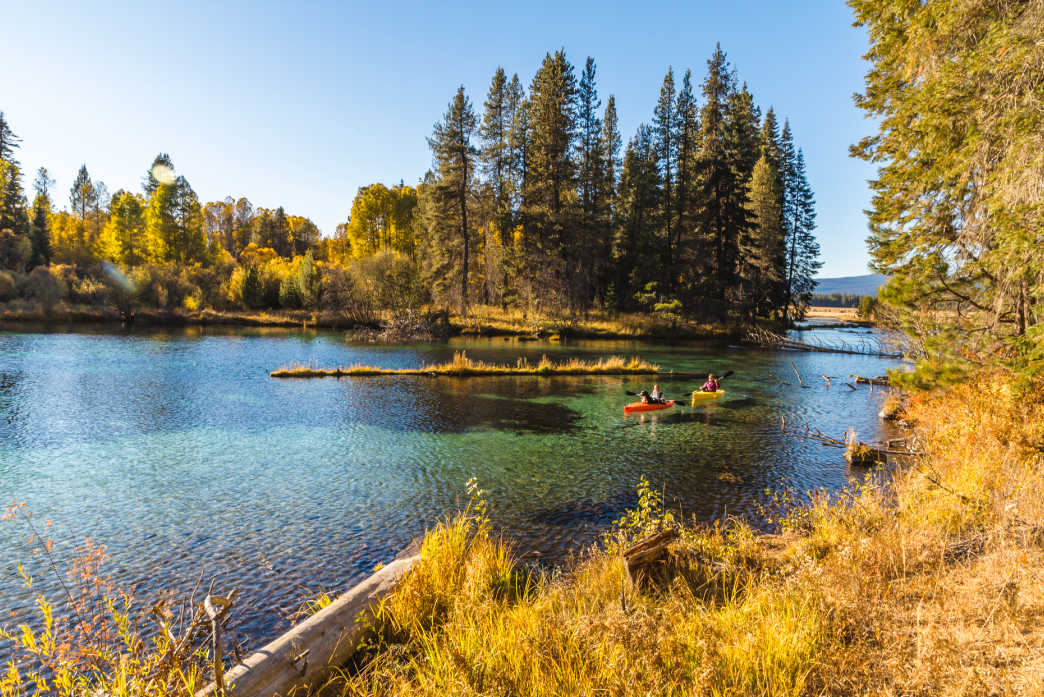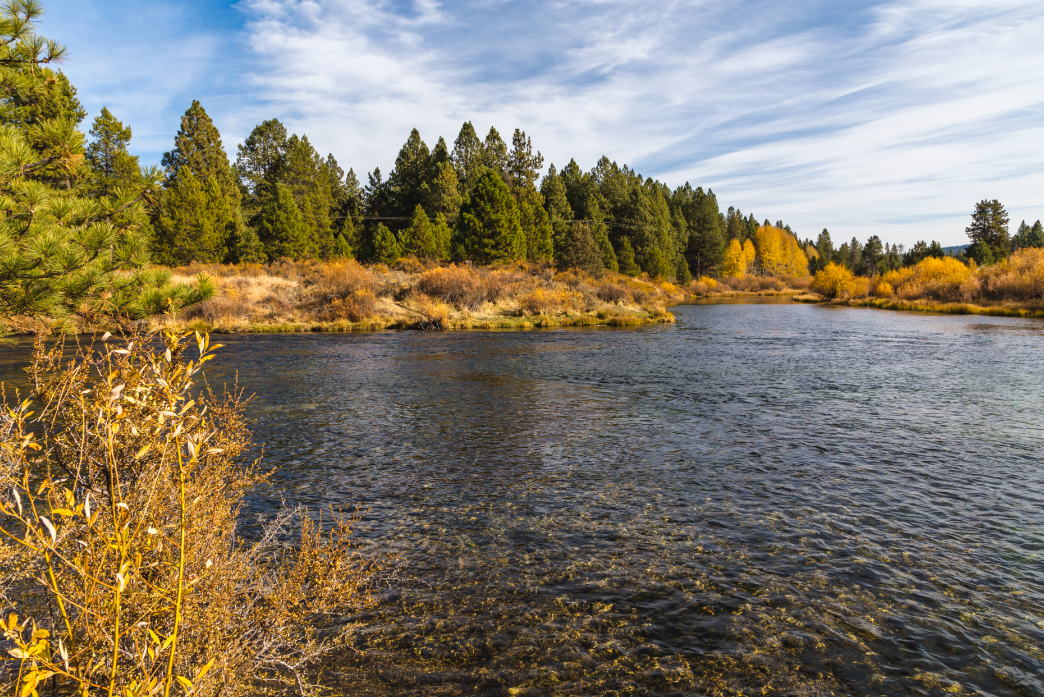10 Best Places to Find Fall Foliage Around Klamath
Klamath County spans a variety of ecosystems, from the pastoral farmland of the Klamath Basin to the heart of the Cascade Range. Through it all, though, one constant feature remains: dazzling fall foliage.
In the county’s drier climates, aspen, oak, and cottonwood trees turn gold in September and October; higher in the Cascade Range, bigleaf maple, vine maple, and dogwood forests delight with shades of red, orange, brown, and yellow as late as Halloween.
So as you make plans to visit this fall, we’ve rounded up the 10 best places to find fall foliage around Klamath County—from quiet day-use areas to scenic hiking trails to dramatic auto touring routes.
Rocky Point and Upper Klamath Lake

Paddling through the vibrant hues of autumn on the Upper Klamath Canoe Trail—a mesmerizing fall adventure. Discover Klamath
Rocky Point sits near the northwestern shore of Upper Klamath Lake, bordering Pelican Bay, and is a treat in all seasons. In winter, the pine forests along the lakeshore afford excellent bird-watching for egrets, pelicans, ospreys, and bald eagles. In spring and summer, meanwhile, the waterways around Rocky Point are idyllic put-in spots for paddlers on the Upper Klamath Canoe Trail—and Rocky Point Resort is beloved for its boat rentals, overnight stays, and scenic restaurant views.
The quiet area calms down considerably in fall—but comes alive with aspen trees that turn gold in late September and early October. The area around Rocky Point Resort is especially prolific with colorful foliage; visit in late afternoon, and you might catch a reflection of sun-drenched trees in the calm waters of Upper Klamath Lake.
Sky Lakes Wilderness
The Sky Lakes Wilderness comprises three lake basins in the Cascade Range just an hour or so northwest of Klamath Falls—and is predictably beloved for its many alpine lakes.
And while those lakes draw scores of hikers, backpackers, and swimmers in summer, an autumn outing is no less rewarding—largely due to the fall foliage you’ll see along the wilderness area’s various trails. Maple, dogwood, hemlock, and Shasta red fir trees line portions of the Cold Springs and Blue Canyon trails, adding pops of red, orange, and yellow along the way.
Lake of the Woods
Nestled in the heart of the Cascade Range, Lake of the Woods (and the surrounding Lake of the Woods Resort) is a popular family vacation destination each summer—cherished for nearby peak views, trophy fishing, and easy access to a variety of outdoor recreation opportunities.
Come fall, though, the maple, aspen, and cottonwood trees around the lakeshore glow with vibrant hues of orange and red. And through mid-October, temperatures typically remain warm enough (between 55ºF and 60ºF) to enjoy a relaxing paddle, allowing you to take in a bigger-picture view of the colorful forest from the water; on a clear day, Mount McLoughlin rises above it all to the northwest.
Ready to see for yourself? Start planning your next getaway, and see why you should visit Lake of the Woods in the off-seasons.
Spence Mountain

Every pedal stroke is a scenic masterpiece of nature’s art at Spence Mountain. Discover Klamath
The mountain bike trails on Spence Mountain are quickly becoming the stuff of legend around Klamath County—and for good reason; after all, where else can you gaze upon Upper Klamath Lake and several Cascade peaks while riding beginner-friendly trails and challenging yourself with more technical paths?
In autumn, those dozens of miles of trails (all of which are also open to hikers) offer another compelling reason to shred: Cottonwood, maple, and aspen trees turn gold by mid-October, livening up the forest and basking in the afternoon sunlight.
Running Y Resort
Whether you’re staying the night or enjoying a meal on the patio at the Ruddy Duck restaurant, Running Y Resort offers no shortage of opportunities to spy leaves of red, orange, and yellow between late September and the end of October. (In fact, fall colors first appear in the trees near the resort’s main entrance—and add a dash of color to the stands around Running Y’s golf course.)
But there may be no better way to experience fall colors at the resort than with a scenic horseback ride. The guided trail rides, led by the woman-owned Jensen Equine, typically last one to two hours; most outings head through the dazzling forests around Running Y Resort, afford views of Upper Klamath Lake, and sometimes include impromptu bird-watching opportunities for great blue herons, bald eagles, and other species.
Volcanic Legacy Scenic Byway
As you might imagine, the volcanoes are the star attraction along the 500-mile Volcanic Legacy Scenic Byway—a (roughly) north-south route that visits several Cascade peaks and multiple national park units in Klamath County and northern California.
You won’t see many fall colors up at Crater Lake National Park, near the byway’s northern terminus, but opportunities abound as you descend toward the Klamath Basin and head south. Keep an eye out, in particular, for colorful aspen and cottonwood groves as you travel Highway 62 (which cuts through Klamath Basin farmland) and Highway 140 (which descends out of the Cascade Range while following the shore of Upper Klamath Lake toward Klamath Falls). As an added bonus: The byway passes through Rocky Point, home to glorious fall colors in its own right.
Learn more, and start planning your trip, with our insider’s guide to the Volcanic Legacy Scenic Byway.
Wood River Day Use Area

Gliding serenely on the Wood River, surrounded by the fiery embrace of fall’s captivating colors. Discover Klamath
Just 40 minutes northwest of Klamath Falls, the Wood River Day Use Area sits in the heart of the Klamath Basin and offers some of the easiest, most accessible, and most brilliant bursts of fall color anywhere in Klamath County.
As the name implies, the quiet day-use area sits along the teal Wood River—and is a popular place to watch for wildlife (including bald eagles, hawks, and other birds fishing for trout in the crystal-clear river), put in for a quiet paddle, take a short stroll, or enjoy a picnic. As the temperature cools in early and mid-October, the cottonwood and aspen groves along its banks turn sensational shades of yellow, offering yet another reason to make the quick trip from Klamath Falls.
Highway 97
There’s a 45-mile stretch of Highway 97, roughly between Klamath Falls (at the southernmost point) and Collier Memorial State Park (at its northern edge) that occupies a unique place in the broader Klamath County ecosystem. Here the highway hugs the eastern shore of Upper Klamath Lake, leaving the Klamath Basin behind for a gradual ascent into the foothills of the Cascade Range.
As it heads north—and before it begins traversing the ponderosa pine forests of the Central Oregon high desert—the highway passes through dozens of miles of dazzling foliage displays; maple, dogwood, cottonwood, and the occasional oak tree are all accounted for here. It all lights up the roadside in hues of yellow, orange, and red—all of which positively pops against the Douglas fir trees interspersed throughout.
Chiloquin
Not far from Agency Lake, the community of Chiloquin sits where the farmland of the Klamath Basin meets the ponderosa pine forests of Eastern Oregon. That unique topography has given rise to aspen and cottonwood trees in and around the community, both of which turn golden in late September and early October.
So whether you’re visiting the Train Mountain Railroad Museum, returning from a late-season trip to Crater Lake National Park, perusing local works at the Two Rivers Art Gallery, or enjoying an outdoor adventure with Sky Lakes Wilderness Adventures, keep an eye out for the community’s colorful foliage displays.
Collier Memorial State Park

Collier Memorial State Park: Where towering evergreens meet crystal-clear waters in a tranquil forest haven. Discover Klamath
The forested Collier Memorial State Park is popular for a variety of reasons; the Williamson River and Spring Creek come together in the park, equestrian trails offer easy access to the surrounding Fremont-Winema National Forest, a seasonal campground hosts more than 60 sites, and an outdoor museum takes visitors up close to dozens of pieces of vintage logging equipment.
But come fall, the park’s walking trails cut through a bucolic forest rich with cottonwood and maple trees that glimmer in the afternoon sun—especially along the banks of the emerald-hued Spring Creek.


